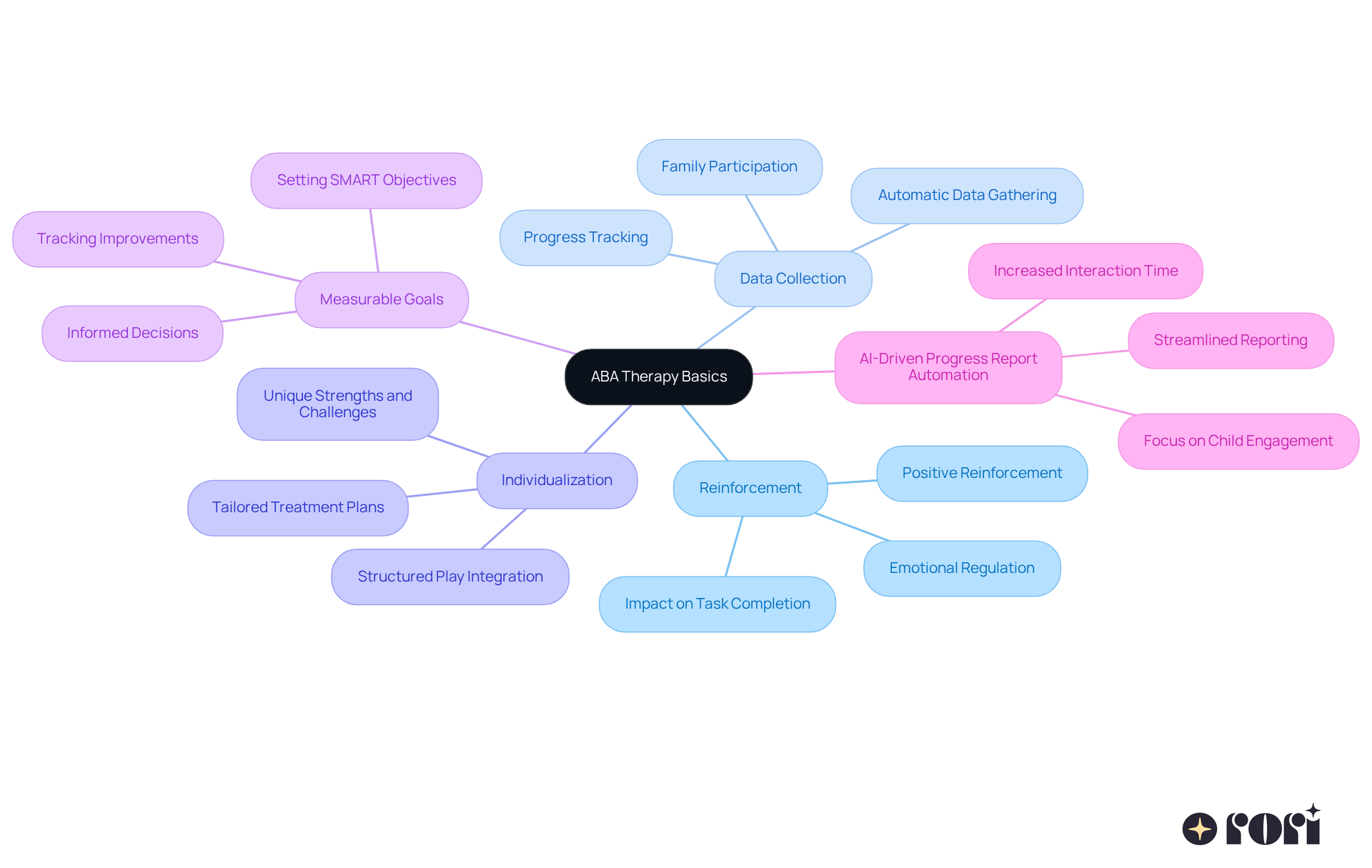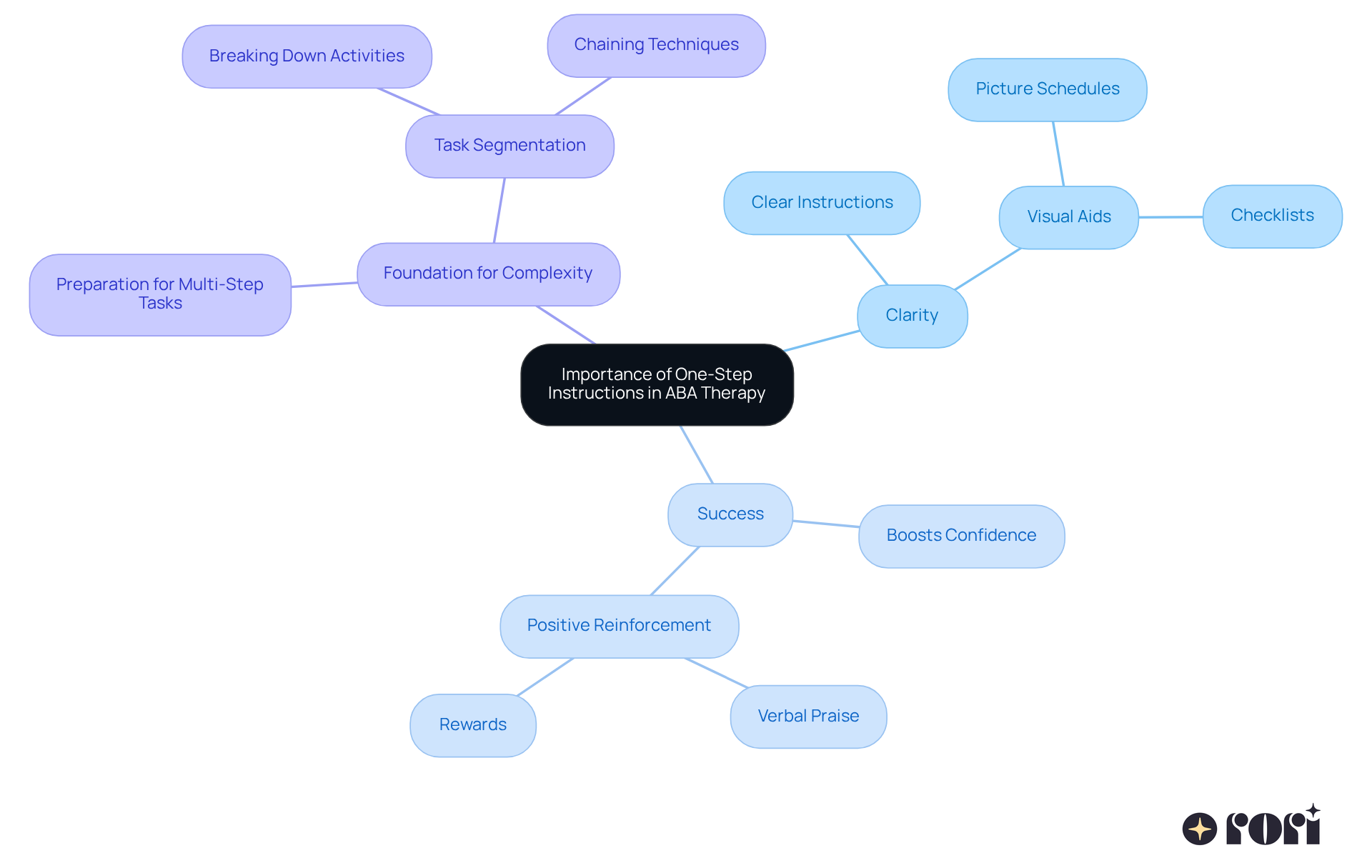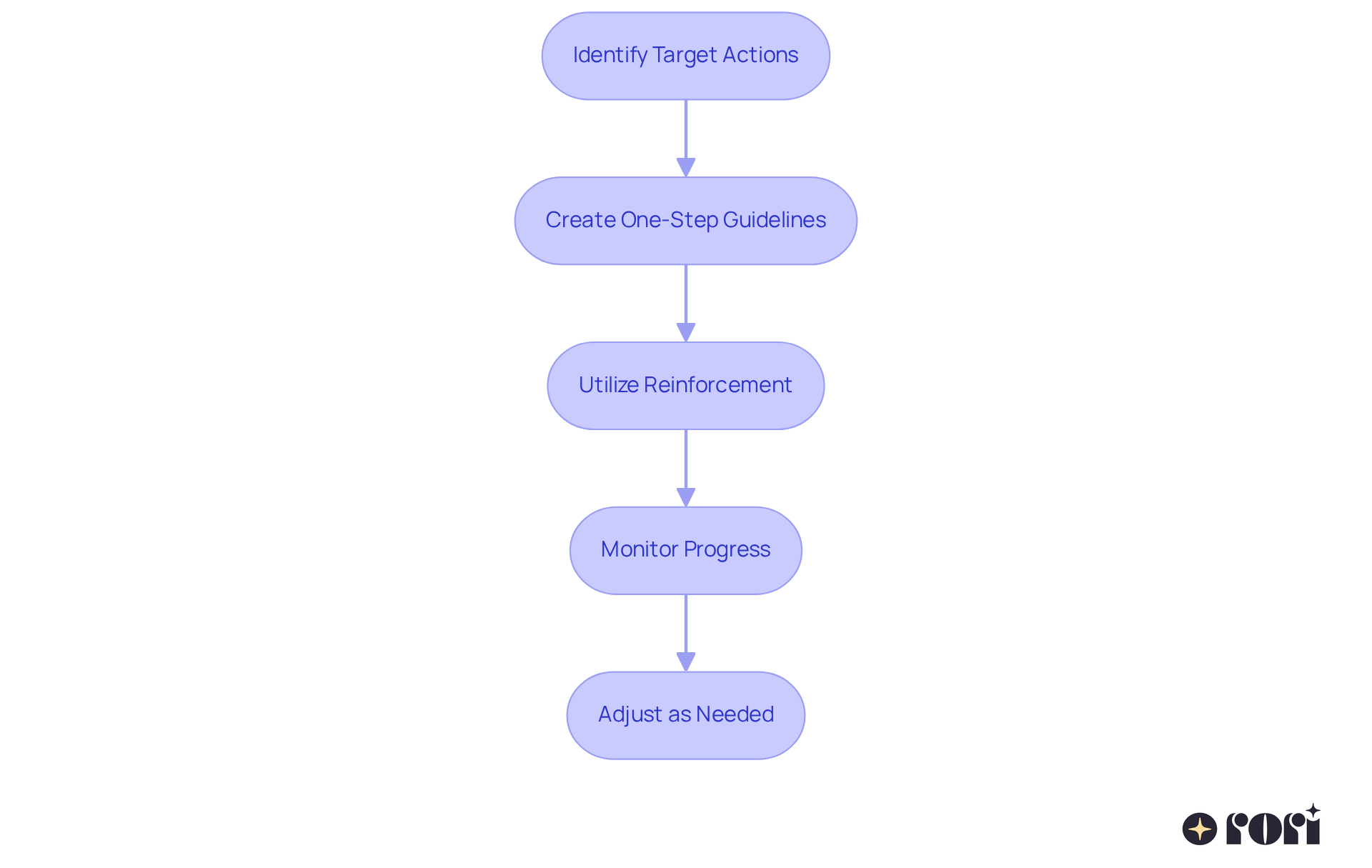This article highlights the significance of using one-step instructions in ABA (Applied Behavior Analysis) therapy, especially for enhancing learning and behavioral outcomes in children with autism. By keeping directives clear and simple, we can help reduce cognitive overload for our little ones. This not only boosts their confidence through successful task completion but also lays a solid foundation for more complex learning down the road. Plus, there's evidence showing that when caregivers actively participate in the therapy process, progress improves even more!
Let’s explore this together! Using straightforward instructions can make a world of difference in how children engage with their learning. Imagine the joy on their faces when they complete a task successfully! It’s those little victories that build their confidence and encourage them to take on new challenges. So, if you're a caregiver, remember that your involvement is key. Your support can truly enhance the effectiveness of ABA therapy and create a more enriching experience for your child.
Understanding the intricacies of Applied Behavior Analysis (ABA) therapy can truly be a game-changer for caregivers of children with autism. This scientifically backed approach not only focuses on enhancing specific skills but also highlights the importance of clear, one-step instructions. This helps to minimize cognitive overload and foster confidence. But what happens when these seemingly simple directives lead to unexpected challenges in implementation?
Let’s dive into some effective strategies and actionable steps that can empower you as a caregiver. Together, we can navigate the complexities of ABA therapy, ensuring you have the tools to support your child's development successfully. We’re here to help you every step of the way!
ABA therapy is a scientifically supported method aimed at improving specific abilities and skills in youth with autism. This approach uses various techniques and principles to foster meaningful behavioral changes. Let’s break down some key components:
By understanding these foundational principles, caregivers can better appreciate the 1 step instructions aba related to the strategies we’ll explore further in the upcoming sections. This knowledge empowers you to support your child’s development effectively. As behavioral therapists often say, "The personalized focus offered by a BCBA is essential for enhancing the success rates of ABA treatment." Let’s explore this together!

In ABA therapy, 1 step instructions aba are extremely important! They help kids focus on one task at a time, which really cuts down on cognitive overload. Let’s dive into why these guidelines matter:
Clarity: Clear, straightforward instructions are key! They help minimize confusion, allowing children to grasp exactly what’s expected of them. This clarity is especially crucial since many individuals with autism find it hard to process complex information. Visual aids like picture schedules and checklists can make understanding even easier by providing concrete references. This patient-focused approach ensures that the treatment is tailored to each child's unique needs, creating a positive learning environment.
Success: When kids successfully complete one-step tasks, it boosts their confidence and encourages them to engage more in their learning journey. Each little victory reinforces their ability to follow directions, creating a positive feedback loop. Did you know that research shows 90% of youth make significant progress when suggested hours of ABA therapy are effectively implemented with engaged caregiver participation? It really highlights how essential this support is for their development!
Foundation for Complexity: Mastering one-step directives lays the groundwork for tackling more complex tasks later. Simple commands like 'clap your hands' or 'pick up the toy' are great ways to practice. Studies suggest that kids who excel at one-step tasks are better equipped to handle multi-step directions down the line, enhancing their overall learning experience. This aligns perfectly with the adaptive strategies used in ABA therapy, which continuously assess and adjust interventions to meet the evolving needs of each individual.
By using 1 step instructions aba, caregivers can create a nurturing learning atmosphere that not only fosters success but also helps kids flourish in their developmental journeys. The knowledge and skills that caregivers gain through education boost their confidence in supporting their child, ultimately leading to better behavioral outcomes. Let’s explore this together!

To implement ABA therapy effectively, let’s follow these structured steps together:
Identify Target Actions: Start by figuring out the specific actions you want to increase or decrease. This could be anything from boosting communication skills to reducing tantrums. For instance, if a little one struggles to share toys, that can be a great area to focus on for improvement.
Create One-Step Guidelines: It’s helpful to craft clear and simple directions tailored to each target action. Instead of saying something vague like 'Clean your room,' try using specific instructions like 'Pick up the toy.' Studies show that clear guidance really helps kids understand what’s expected, making it easier for them to follow along.
Utilize Reinforcement: When your child successfully follows the directions, offer immediate positive reinforcement. This could be praise, a sticker, or a small treat. BCBAs highlight that quick reinforcement strengthens the link between the action and the positive outcome, encouraging your child to repeat the desired behavior.
Monitor Progress: Keep an eye on how your child responds to the guidance and adjust as needed. You can use data collection methods, like daily logs or charts, to see how well your approach is working. For example, if a child consistently picks up the toy when asked, it’s a sign that positive changes are happening. Tools like behavior tracking apps can also make this process easier.
By following one-step instructions in ABA, caregivers can really enhance the effectiveness of ABA treatment. Personalizing plans and setting measurable goals ensures that each child’s unique needs are met. Plus, regular check-ins allow for necessary adjustments to improve outcomes. The behavior care engine even tweaks intervention plans based on progress, keeping things flexible. Empowering caregivers with ABA principles and strategies not only supports their child’s development but also creates a collaborative environment that encourages consistency and positive changes. Let’s explore this together!

Implementing ABA therapy can come with its own set of challenges for caregivers. Let’s explore some common issues and effective strategies to tackle them together using 1 step instructions aba!
Resistance to Instructions: It’s not uncommon for children to resist following instructions for various reasons. To help with this, make sure the 1 step instructions aba are clear and suitable for their development. Simplifying instructions or using visual aids, like picture schedules, can really boost understanding and compliance.
Inconsistent Reinforcement: Consistency is key when it comes to reinforcing positive behavior. Rewards should be given right after the desired action to strengthen the link between the action and the reward. Prompt reinforcement can lead to better goal attainment, highlighting the importance of timely responses in supporting those positive actions.
Lack of Progress: If you notice that a child isn’t making much progress, it might be time to reassess the target behaviors and consider using 1 step instructions aba. Adjusting these based on the child's reactions can lead to better outcomes. Don’t hesitate to consult with a Board Certified Behavior Analyst (BCBA) for additional insights tailored to your child's unique needs. Gathering data is crucial here; ongoing monitoring helps therapists spot patterns and make informed adjustments to the treatment plan.
By proactively addressing these challenges and tapping into the knowledge gained through caregiver education, you can keep the momentum going in your ABA therapy efforts. Together, we can support your child's growth and development more effectively!

Understanding and implementing ABA therapy effectively means embracing the importance of one-step instructions. These serve as a foundation for fostering positive behavioral changes in children with autism. This approach not only simplifies tasks but also enhances the learning experience, allowing children to engage with their therapy in a meaningful way.
The article highlights essential components like:
By focusing on clear, one-step instructions, caregivers can reduce confusion, boost confidence, and prepare for more complex tasks down the road. Plus, tackling common challenges—like resistance to instructions and inconsistent reinforcement—empowers caregivers to keep the momentum going in their child's development.
Ultimately, the journey of implementing ABA therapy is a collaborative effort that thrives on understanding, patience, and active participation. By embracing these principles and strategies, caregivers can create a nurturing environment that not only supports their child's growth but also fosters lasting behavioral improvements. Engaging with the process and staying adaptable will ensure that each child receives the tailored support they need to flourish. Let’s explore this together, and remember, we’re here to help you every step of the way!
What is ABA therapy?
ABA therapy, or Applied Behavior Analysis therapy, is a scientifically supported method designed to improve specific abilities and skills in youth with autism through various techniques and principles aimed at fostering meaningful behavioral changes.
How does positive reinforcement work in ABA therapy?
Positive reinforcement is crucial in ABA therapy as it encourages desired behaviors by offering rewards. Studies indicate that children who receive consistent positive reinforcement show significant improvements in task completion and emotional regulation.
Why is data collection important in ABA therapy?
Data collection is vital for assessing the effectiveness of interventions. It allows therapists to track progress without interrupting sessions for note-taking, enabling them to adjust strategies based on individual responses and ensuring that each child's unique needs are met.
How are treatment plans individualized in ABA therapy?
Treatment plans are tailored to each child's specific needs by aligning with their unique strengths, challenges, and goals. This personalized approach enhances engagement and creates a nurturing environment for children to thrive.
What role do measurable goals play in ABA therapy?
Measurable goals are essential for tracking behavior change and skill development. They provide a transparent benchmark for progress, allowing caregivers and therapists to monitor improvements and make informed decisions about the treatment plan.
How does AI technology enhance ABA therapy?
AI-driven progress report automation streamlines the tracking process and prebuilding of progress reports, allowing therapists to spend 50% more time interacting with children, thereby improving the overall treatment experience.
How can caregivers support their child's development in ABA therapy?
By understanding the foundational principles of ABA therapy, caregivers can better appreciate the strategies used and actively participate in their child's progress, ultimately empowering them to support their child's development effectively.